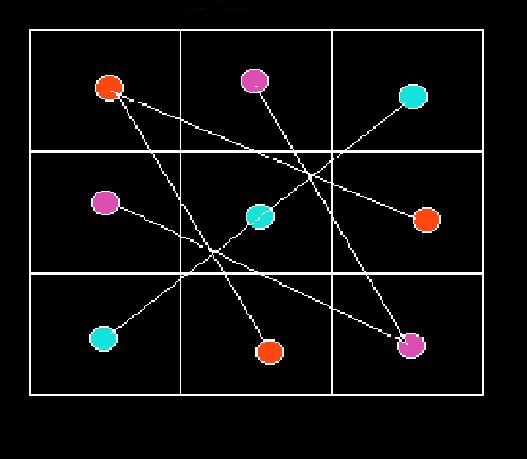

Recently a new method for the generation of squares of squares were produced in Part IA through Part IVE.
In addition, a new interleaved sequence of
This site will show two other sequences are generated from the square sequence method developed in Part IA and ending with Part IVE .
The previous parts showed that a tuple (a1,b1,c1) can be converted into a different tuple (a,b,c) basically a transformation of the type (a1,b1,c1) ⇒ (a,b,c). In addition, the initial tuples start out with the tuples (1,b1,1) or (1,1,c1) in which the b1s and the c1s have the following values:
where k is any natural integer from 1 to ∞ used in calculating f and the denominator d = 2(2b1 − c1 − 1 ) in the equation:
This equation is critical is that it is the initial starting point for generating the interleaved sequences. This page is a summary of the initial work done on interleaved sequences.
The tables listed below although produced according to the methods of Parts IA through IVE, were actually computed and outputted by a computer program. Only one sequence is apparent. One tuple ends and the other continues on the next line. Initially the tables was constructed using the initial tuple (1,1,-1).
|
|
|
|
|
No separation of sequences has to be done. Since the factor fs = 1, the equations to be used are:
Using these equations (or copying directly from Table II) we obtain for the sequence whose Sloane number is
A178218:
1, 1, -1, 1, 1, 5 , 7, 13, 17, 25, 31, 41, 49, 61, 71, 85, 97, 113, 127, 145, 161, 181, 199, 221, 241, 265, 287, 313, 337, 365, 391, 421, 449, 481, 511, 545, 577, 613
The Generating Function (G.f.) for this sequence is
(1 − x − 3x2 + 5x3) /(1+x)(1−x)3 and
differs from the Sloane number A178218 because of the four extra digits at the start of the sequence. In addition,
the two equations used in A178218 are b and c, while the ones used here
are a and b.
Note that a G.f. as defined by Wikepedia
is a formal power series in one indeterminate, whose coefficients encode information about a sequence of numbers an that is indexed by the natural numbers,
i.e., the coefficients of the equation are each of the terms in the sequence being looked at which in this case is :
1 + x − x2 + x3 + x4+ 5x5 + 7x6 + 13x7 + 17x8 + 25x9 + 31x10 ...
and are obtained by dividing the numerator by the denominator above.
This concludes Part G. Go back to homepage.
Copyright © 2012 by Eddie N Gutierrez. E-Mail: Fiboguti89@Yahoo.com